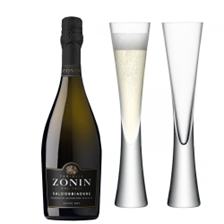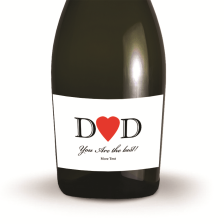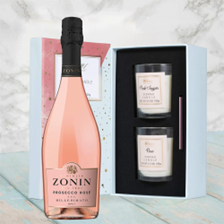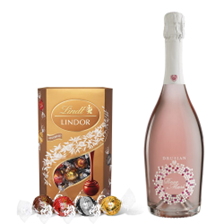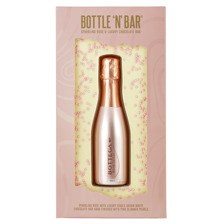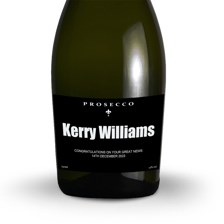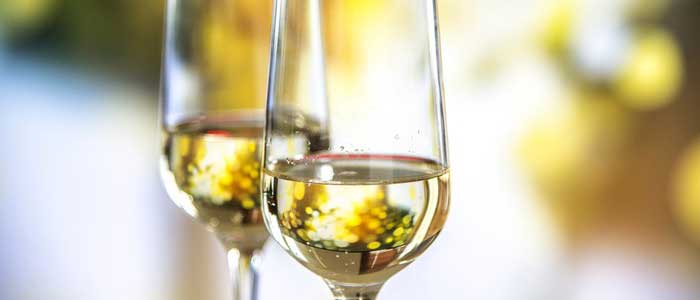
Over the past decade, Prosecco has bubbled up from obscurity to become the UK's Number 1 fizz. According to a report by IRI Worldwide, sales of the sparkling wine eclipsed Champagne sales back in 2016, with a massive £356m sold.
With Prosecco well and truly here to stay, there's never been a better time to get clued up on this delicious bubbly drink. To help you out, we've answered your most frequently asked questions about this sparkling wine. If you’re new to the drink or already passionate about Prosecco, you're sure to learn something from this guide, including:

Prosecco is a sparkling (or semi-sparkling) white wine from Italy. It’s seen a huge surge in awareness and popularity over the past few years here in the UK.
Why is Prosecco popular? Because it’s so accessible.
Like its cousins Champagne and Cava, Prosecco is double fermented, which makes it fizzy. However, Prosecco is unique in the fact its second fermentation takes place in steel tanks rather than in the bottle. This makes it cheaper to produce, with the savings passed on to the consumer. This method also gives the wine the fresh, fruity notes that make it so popular.
Like Champagne, Prosecco is protected by ‘DOC’ (??Designation Of Controlled Origin) status, which means that only wines produced in a specific area with specific techniques can technically be classed as Prosecco.
Prosecco’s Prosecco, right? Not quite. There are actually three main types to be aware of.
Most commonly you’ll come across Spumante, which is the classic, bubbly, straw-coloured Prosecco we know and love. Then there’s Frizzante, which has slightly less effervescence, while Tranquillo has no bubbles at all.
To further complicate matters, Prosecco comes in Demi-Sec, Dry, Extra Dry or Brut varieties, depending on sugar content.
It’s important to note that the character of each bottle may be affected by the specific terroir of the vineyard, production methods and the growing conditions that year.
The best way to find your favourite? Get experimental and sample a variety of different options!
In a word, no! Although they are both bubbly drinks from specific terroirs, Cava is from Spain and Prosecco is from Italy.
Prosecco is also made differently by law, using the tank method. Cava, on the other hand, has to be made in the traditional Champagne method. However, both tend to be light, quaffable and bubbly!
Prosecco comes from the Veneto and Friuli-Venezia Giulia regions of northern Italy, between the Dolomites and Adriatic. Under EU law, wine can only be labelled as Prosecco if it is produced in this region.

The answer is, of course, grapes. Specifically, Prosecco is made from white Glera grapes (commonly known as Prosecco grapes), which produce a relatively neutral flavour well suited to sparkling wines.
Some Proseccos may contain up to 15% of other varietals too, according to denomination law. Other permitted grapes include Pinot Bianco, Pinot Grigio, Verdiso and Chardonnay.
In 2020, a rosé variety came on the scene, courtesy of a change to the DOC rules. The Glera grapes are mixed with a maximum of 15% Pinot Noir grapes to achieve a soft pink blush.
Prosecco typically has a light, crisp, neutral flavour, with a heady fragrance. It is often sweeter than Champagne and may have tropical notes, making it the perfect tipple for a summer evening!

Prosecco and Champagne are both sparkling wines (usually white), synonymous with celebration. However, budding sommeliers should be aware of the key differences between these two distinct drinks.
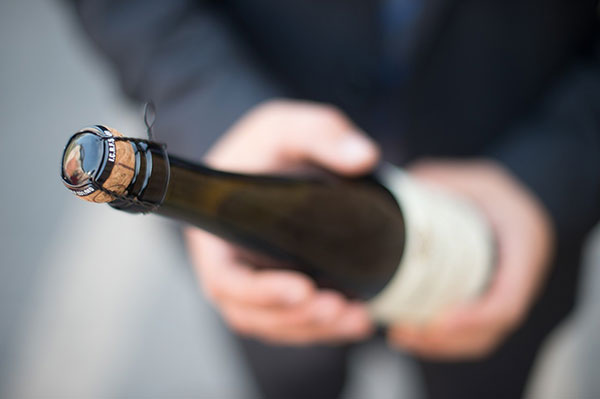
If you want to pour the perfect glass of bubbles every time, simply follow these steps:
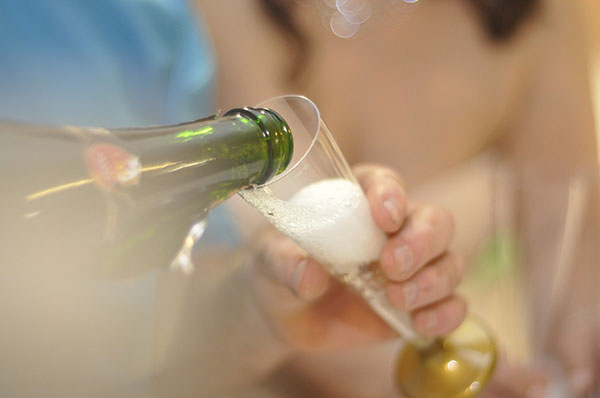
You'll get six 125ml glasses from a standard bottle of Prosecco, which contains 75cl. If you're only half-filling the glasses for a toast, one bottle will stretch to 12 glasses.
You can also get magnums and jeroboams of Prosecco. A magnum holds twice as much as a standard bottle, meaning you'll get 12 full glasses or 24 tasting pours from each magnum of Prosecco. A jeroboam is twice the size of a magnum and four times bigger than a standard bottle. You'll get 24 glasses and 48 tasting pours from each jeroboam of Prosecco.
These larger bottles are ideal for parties and weddings where you're going to be serving lots of guests. They'll provide a great talking point at your next event and make a perfect present for a Prosecco lover too.
Here's a quick reference chart showing how many 125ml glasses of Prosecco you get from a bottle, a magnum or a jeroboam:
A glass of Prosecco contains around 1g of sugar and 80 calories. Considering a glass of white or red wine contains around 160 calories, a pint of lager 180, and a pint of cider 210, Prosecco is a relatively low-calorie tipple.
| Volume |
How many full (125ml) glasses does it contain? |
How many tasting pours does it contain? |
| Bottle of Prosecco (75cl) | 6 | 12 |
| Magnum of Prosecco (1.5l) | 12 | 24 |
|
Jeroboam of Prosecco (3l) |
24 | 48 |
Wines may have a high ABV, but what about Prosecco? Typically, Prosecco has an alcohol content of around 11–12.5%, making it a relatively low-ABV wine.
There are around 2.1 units of alcohol in a glass of Prosecco, and around 12.6 in a bottle.
Ensure you check the bottle for specific information on the number of units you're consuming. Don’t forget that alcohol affects everyone differently, so always use your own judgement when it comes to knowing your limits.
A glass of Prosecco contains around 1g of sugar and 80 calories.
Given that there is 1g of sugar and 80 calories in a glass, and there are 6 125ml glasses per bottle, there is around 6g and 480 calories in a bottle of Prosecco.
Considering a glass of white or red wine contains around 160 calories, a pint of lager 180, and a pint of cider 210, Prosecco is a relatively low-calorie tipple. Of course, as with all good things in life, Prosecco should be enjoyed in moderation.
Not all Prosecco is vegan and it can be hard to know what is. Prosecco will be clearly labelled as vegan if it is, so make sure to read the label carefully if you're after vegan-friendly fizz.
Every bottle of Prosecco made by Bottega and Zonin is vegan, so stick to these brands and you won’t have a problem.
Thankfully all wines are gluten-free, so fill your glass! Prosecco can be enjoyed as part of a gluten-free diet (in moderation, of course!).
Once you've opened a bottle of Prosecco, you should replace its cork with a wine stopper, store it in the fridge, and consume the rest within three days. If it lasts that long!
It can. If you leave it open for more than three days, it will lose its bubbles and develop an unpleasant vinegary taste.
Prosecco is intended to be consumed within a year of being made, so keep an eye on its best-before date and don't buy it too far in advance.
For the best results, Prosecco should be stored upright in a cool, dark place and then chilled to 8–10°C before serving.
Because Prosecco has a neutral flavour, it goes well with a wide variety of foods. This makes it the perfect drink to serve alongside a buffet because it won't clash with any of the tastes on the table. Of course, it's just as delicious on its own or as an aperitif, too.
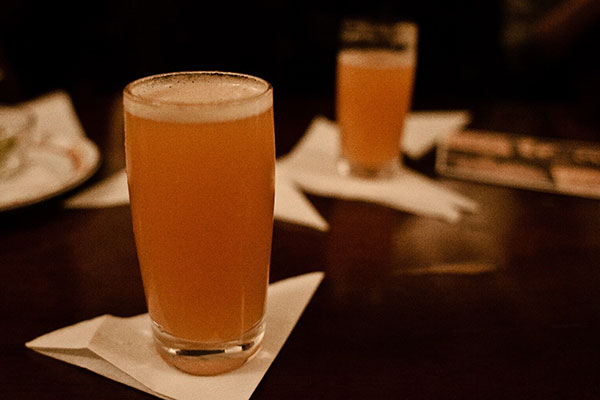
The Bellini is a classic Italian cocktail and you can make your own in minutes. It's the perfect way to do something a bit different with your Prosecco and always gets the party started.
Here's how to make a Bellini with Prosecco:
If you fancy trying Prosecco, why not take advantage of our Prosecco delivery? We’ll drop a fantastic selection of fizz at your door on the next working day. All of our bottles and hampers of Prosecco are hand-selected by our team of experts, so you can rest assured that it’ll be a great quality selection.
And if you’re looking for a gift for a fizz fan, we can deliver Prosecco and chocolate gift sets, Prosecco hampers, or some luxury gift-boxed Prosecco. Professionally packaged, these Prosecco gift sets look impressive and taste even better. What better way to show a loved one how much you care?
In the UK, National Prosecco Day is on 13 August every year. Chill your bottle, pop the cork and enjoy a cool glass of bubbly come rain or shine!
Got any pressing questions about Prosecco that weren't answered in this guide? Contact us and speak to one of our wine experts today.

